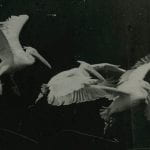/fəʊtəˌGrɑːf/: drawing with light
Sir John Herschel phrased the term ‘photo-graphy’ in 1839 in his Royal Society paper on photography (1839), it is based on the Greek φῶς (phos), meaning ‘light’ and γραφή (graphê), meaning ‘drawing / writing’ – together meaning ‘drawing with light’ (in Schaaf, 2013)

In this session participants will produce images using light painting techniques / artifical light sources in order to explore the idea of the constructed image, the dependence of the photographic process on light and time, as well as further consolidating learning of photographic exposure / shutter speeds and the representation of time and motion
‘if I should ever seriously photograph, it would be…the flux of things. I wanted then, and still do, to express the ‘thing’ as part of total flow’ (Morgan in Morgan & margolis, 1980)
This Session could be run in conjunction with:
- Sculpted by Light
- Land into Landscape – post to come

Aims & Outcomes:
- For participants to visually explore the nature of photographic seeing and constructing images using light
- For participants to understand how exposure and shutter speeds can influence the image
- Participant Take Away Outcome: At least 3 different light writing photographs

You will need:
- Digital Camera with a manual exposure setting
- Tripods
- A darkened room / studio or shoot outside at dusk / night
- A selection of movable light sources (e.g. torches, phones, glo-sticks, maglights, fairy lights, flashguns, bicycle lights etc) *if you are outside, car headlights can also illuminate a space
- Shutter release (for self portraits etc)
- Card readers
- Access to computers (or laptops)
- An introductory brief & Presentation (below) for participants to outline the ideas and provide examples
- A booked room to critique participants work (either via a projector or via print)
- Blue tack to pin the work
- Costings and Risk Assessment

While the signature was of course apparent to [Man Ray], the photograph remained for many years an “abstract image” to others. The discovery of this inscription is both a revelation and a resolution. Now, seven decades after he made his own game of Hide-and-Seek, we can finally look back at Man Ray and say: “There you are!” (Carey, 2011)
preparation Work:
- Plan at least 5 different approaches to drawing with light and make sure you have all materials. Think about;
- Light Drawing: The light source can be seen by the camera, during a long exposure the artist uses this light source to draw, write or create a design within the frame
- Kinetic Light Painting; The lights in the scene generally remain stationary while the camera itself is moved about during a long exposure to create color and design within the frame.
- Light Painting; The artist uses handheld light sources to selectively illuminate parts of a scene during a long exposure photograph.
- Ask participants to read A History of Light Painting Photography available here
- Ask participants to think of and draw out some initial ideas for constructing images using light. There are a number of introductory videos to be found online but a good example for beginners is here
- Ask participants if they have thier own digital cameras and cards
- Make sure you have access to computers
- Make sure there are enough team members to support participants (never assume thier prior knowledge)
- Decide whether you will project the work or print it.
- If you are printing it (6×4) make sure the Photo Lab are aware and be aware of timekeeping so they have space in the session to print the work.
- *If you are running this session off campus, make sure there is access to a darkened room, printers or projectors

‘The viewer is instantly confronted with how frequently we take for granted the light in our everyday lives, not to mention its role in traditional photography. After all, how else would one make a photograph without at least a minimal amount of available light in the environment? One look at [Chamberlains] works and it becomes clear–there are other ways. While Chamberlain paints with light through time and space, the light itself becomes the primary subject matter, shifting the focus from the subject/object to the very element through which the work (and our lives) are revealed’ (Meta Gallery, Toronto, 2008)
presentation ideas: drawing with light
‘Light used in its own right, as in light pictures, gives to photography the wonderful plasticity that paint gives to painting without loss of the unmatched reality of straight photography’ Wynn Bullock (in bullock Family 2019)
lightwriting: activity ideas
You might:
- Draw a picture
- Outline a person / object
- Spin some fairy lights to create an orb
- Do a double exposure
- Use flash / torches to light certain aspects of an internal / external scene
- Write a message / your name
- Use glo-sticks to create abstractions
- Use movement (either object or camera) to create abstractions
Suggested Session Outline:































